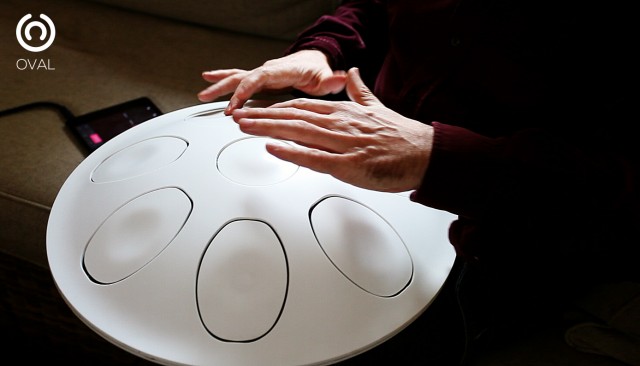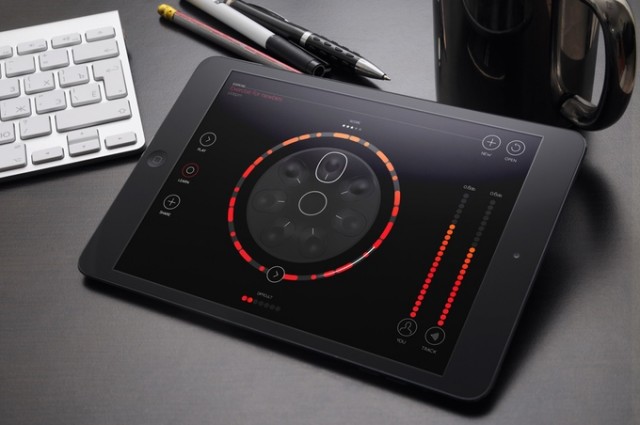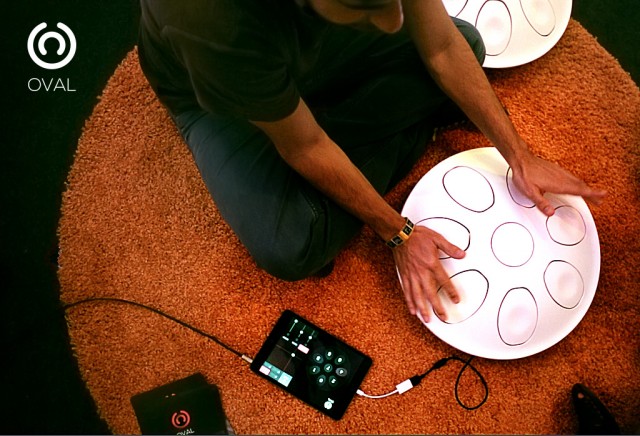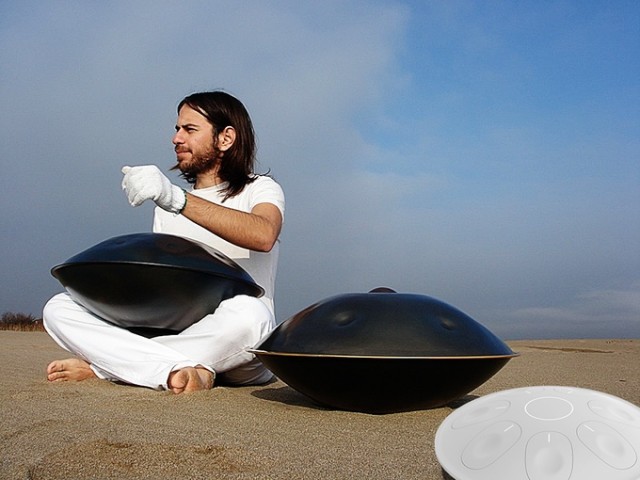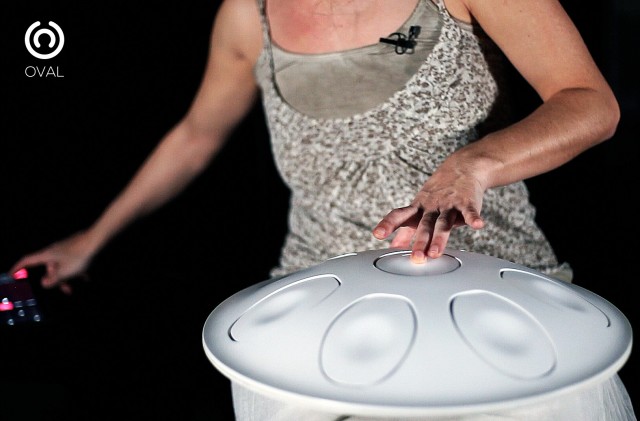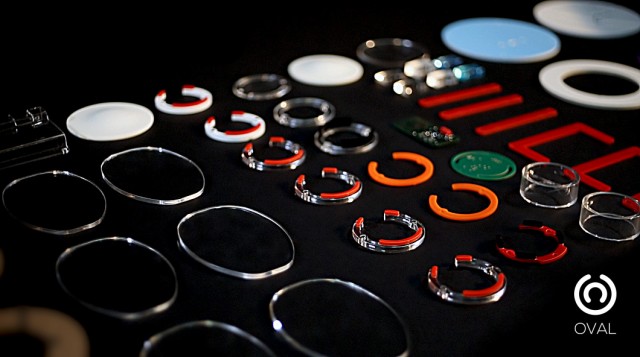It looks either like a hand pan (if you know your percussion instruments) or a flying saucer sitting in someone’s lap.
But Oval is actually a digital instrument, a physical object that connects to a smartphone, tablet, or computer, and then produces any sound you want.
It’s also emblematic of how the scene in alternative instrumental controllers have changed. A few short years ago, something like this most likely would have seen a one-off prototype. Its natural habitat would be an academic conference (hello, NIME). Maybe you’d see it onstage, maybe you’d read about it.
Nowadays, things are different. Just a couple of days after launch, the project reached its initial 100,000€ Kickstarter goal. It’s connected to an app, an extension of your mobile gadget (though you can use it via MIDI with software if you like).
The usual pitch about this allowing anyone to play music apply. Of course, that’s not something new to digital instruments. Folk instruments have let anyone play music more or less since the dawn of civilization. So it’s about time that digital instruments undo the damage that a century of recorded music, cultural fragmentation, and uneven musical education have done to the once-common practice of getting together and jamming. (That’s a rant for another time.)
The heart of the project is a team centered on a collaboration between (traditional) handpan musician Ravid Goldschmidt and designer/technologist Alex Posada. We’ve seen Alex and team work before on the RGB open source Bhoreal grid. This feels like a leap forward – something genuinely new, in contrast to a project that was compelling but at least related to tools already available. (Bhoreal I want to follow up on, too, though – it’s more compact and possibly more practical for many CDM readers. So stay tuned for the latest on that project once I head south to SONAR.)
Now, then, the question is whether you want to cozy up to this big UFO in your lap or not. Well, there are some interesting features of the design:
The case is impressive. That’s not plastic – natural resins and acrylic are combined with “minerals like bauxite, marble, and quartz.” I’m eager to check this thing out in person when I’m in Barcelona for SONAR; the case fabrication is something unique.
Expressive input. The pads on the drum itself are interesting: you get pressure-sensitive pads with both velocity and X/Y, turning the entire surface into a controller you can then layer.
Visual feedback. The big innovation of the last ten years in digital instruments I believe has been primarily decoupled visual cues – exemplified in minimalistic form by the monome. Previous work in digital instruments often focused on the gesture, but not on the potential of digital instruments to respond to what you were doing. Now, whether such visual feedback is always useful is another question, but it’ll be interesting to see if this can rise above the use of just games and so on. I imagine it might be at its best when it’s at its subtlest.
Bluetooth connectivity. What makes this work as a connected instrument is all to do with that low-energy Bluetooth connection. Unlike earlier Bluetooth iterations, that’s already proven to yield high performance / low latency operation and reliable connections, and it integrates well with existing MIDI software. In the case of the Oval, this means MIDI with your existing computer and mobile software, plus the possibilities opened up by working with an app to manage sounds and add features.
Catalan made. The product is designed and engineered – but also made – in Barcelona. This is a unique moment in Europe: while the economic crisis has brought mostly bad news, it also affords opportunities to actually make a product inside the unified European market, in the middle of a rich cultural capital.
Musical pedagogy as consideration. This is interesting, too. The team are also offering up notebooks with thoughts and exercises; part of the goal is actually learning to play an instrument as a musician.
The actual product starts at 349-399€ for backers.
Here’s a beautiful new video featuring a duo for ‘cello and Oval, with Marçal Ayats joining Ravid Goldschmidt.
It’s promising stuff. But maybe my tendency not to rush to write about every Kickstarter project is that I’ve yet to see success stories on the other side – a case in which the upfront funding had a big payoff. (Keith McMillen Instruments had some success with their project, which could be a case study, but they were also already a manufacturer.)
Then again, the ingredients to make this work – from ARM architectures to Kickstarter backing to low-energy Bluetooth – are all reasonably new. As always, it’s a gamble on that future. From where I sit, the job will be to track this project as it evolves and ships to see what impact it can have. And I look forward to meeting up with the participants in person in Barcelona.
Tech specs:
Dimensions: 420 x 420 x125 mm
Weight: 3,1 kg
Materials: Solid Surface with acrylic, quartz, marble and bauxite.
Rechargeable long-lasting lithium battery via USB.
Class-compliant MIDI over USB connectivity through Lightning on iOS and USB on Android and any other operating system.
Bluetooth BLE connectivity with Apple BLE MIDI compatibility on iOS8 and OSX Yosemite
External input for a pedal or external controller
ARM Cortex M3 microprocessor
Bluetooth 4.0 Low energy
You can find the project on Kickstarter:
Oval – The First Digital HandPan
